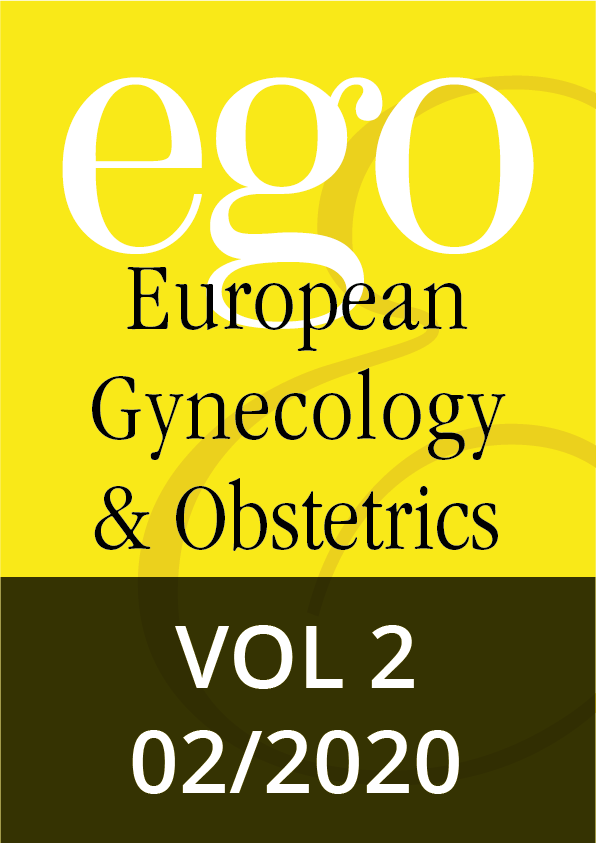Editorial, 03-04 | DOI: 10.53260/EGO.202011
Editorial, 071–072 | DOI: 10.53260/EGO.202021
Short reviews, 073–076 | DOI: 10.53260/EGO.202022
Short reviews, 077–081 | DOI: 10.53260/EGO.202023
Short reviews, 082–089 | DOI: 10.53260/EGO.202024
Short reviews, 090–093 | DOI: 10.53260/EGO.202025
Case reports, 094–097 | DOI: 10.53260/EGO.202026
Case reports, 098–100 | DOI: 10.53260/EGO.202027
Short reviews, 10-15 | DOI: 10.53260/EGO.202013
Case reports, 101–104 | DOI: 10.53260/EGO.202028
Original articles, 105–110 | DOI: 10.53260/EGO.202029
Original articles, 111–115 | DOI: 10.53260/EGO.2020210
Original articles, 116–122 | DOI: 10.53260/EGO.2020211
Original articles, 123–126 | DOI: 10.53260/EGO.2020212
Original articles, 127–131 | DOI: 10.53260/EGO.2020213
Diagnosis and treatment options for hypogonadotropic hypogonadism in adolescents, men and women – Review of an expert meeting
Abstract
Hypogonadotropic hypogonadism (HH) may be caused in most cases by deficient production or deficient function of gonadotropin-releasing hormone (GnRH). This hormone is secreted in a pulsatile manner by hypothalamic neurons, stimulating the release of gonadotropins – luteinizing hormone (LH) and follicle stimulating hormone (FSH) – from the pituitary. Both FSH and LH activate gonadal maturation in ado-lescents and regulate fertility in adults.
In this paper we summarize the results of the presentations given and discussions held during an inter-national meeting in June 2018 in which all the authors participated. The paper discusses the physiology of the hypothalamus-pituitary-gonadal axis, induction of puberty and sexual development in adolescents with HH, and the diagnosis and treatment of HH in adult men and women.
Hypogonadotropic hypogonadism is a rare disorder with major clinical implications such as pubertal failure and infertility. Adolescents with HH should be treated with hormonal replacement therapy to allow pubertal development. Treatment with gonadotropins or pulsatile GnRH is proposed for testicular maturation in boys/men and fertility, whereas gonadotropins or pulsatile GnRH may be given to fe-males only for fertility purposes.
GnRH, administered subcutaneously in a pulsatile fashion with the aid of a portable infusion pump, is a safe and effective treatment for restoring fertility in men and women with HH. In women with polycys-tic ovarian syndrome (PCOS) pulsatile GnRH is less effective, but in women with hypothalamic amenor-rhoea with underlying PCOS, some studies have shown that pulsatile GnRH therapy is a more successful and safer treatment for ovulation induction than gonadotropins and should therefore be the first-line therapy in these women. Randomized controlled studies are still awaited to examine the cost-effectiveness of gonadotropins compared with pulsatile GnRH in infertile patients with HH.
Keywords: GnRH, Gonadotropins., Hypogonadotropic hypogonadism, Induction of puberty, infertility, PCOS, Pulsatile GnRH, Sexual development
Citation: Christin-Maitre S.,Zitzmann M.,Lambalk C.,Pitteloud N.,Dubourdieu S.,Hildebrandt T.,et al. Diagnosis and treatment options for hypogonadotropic hypogonadism in adolescents, men and women – Review of an expert meeting, EGO European Gynecology and Obstetrics (2020); 2020/02:082–089 doi: 10.53260/EGO.202024
Published: April 1, 2020
ISSUE 2020/02

Editorial, 03-04 | DOI: 10.53260/EGO.202011
Editorial, 071–072 | DOI: 10.53260/EGO.202021
Short reviews, 073–076 | DOI: 10.53260/EGO.202022
Short reviews, 077–081 | DOI: 10.53260/EGO.202023
Short reviews, 082–089 | DOI: 10.53260/EGO.202024
Short reviews, 090–093 | DOI: 10.53260/EGO.202025
Case reports, 094–097 | DOI: 10.53260/EGO.202026
Case reports, 098–100 | DOI: 10.53260/EGO.202027
Short reviews, 10-15 | DOI: 10.53260/EGO.202013
Case reports, 101–104 | DOI: 10.53260/EGO.202028
Original articles, 105–110 | DOI: 10.53260/EGO.202029
Original articles, 111–115 | DOI: 10.53260/EGO.2020210
Original articles, 116–122 | DOI: 10.53260/EGO.2020211
Original articles, 123–126 | DOI: 10.53260/EGO.2020212
Original articles, 127–131 | DOI: 10.53260/EGO.2020213
